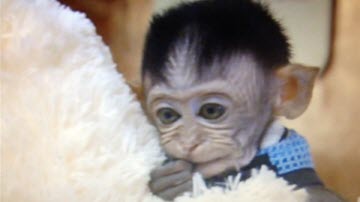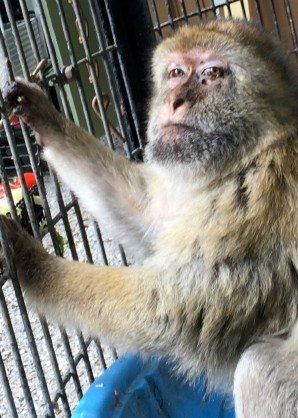
Rescue Stories
In some instances, relocating an animal to the Primate Rescue Center has been a relatively simple and straightforward process: an owner put his or her monkey in a transport cage and drove the unwanted pet to our sanctuary. We then placed the animal in quarantine for 30 days to insure that he or she was free of diseases that might be spread to other residents. Introductions to other monkeys followed, with hopes that the newcomer would find a welcoming and suitable new environment.
But it’s rarely been that simple: we’ve often gone to great lengths to rescue pets, in some cases traveling as many as 2,000 miles to complete the mission. We’ve had to use wire cutters and hacksaws to extract animals from cages with busted locks or missing keys. We’ve tranquilized unruly and dangerous primates with dart guns, only to have them awaken before the transfer was completed. We’ve had torturous negotiations with local authorities over paperwork requirements to move ailing monkeys to our facility. And we’ve endured the broken promises of those offering us financial aid to rescue their once-beloved pet and provide that animal with lifetime care.
While the process isn’t always easy, the subsequent recoveries we’ve witnessed make it all worthwhile. In the insightful words of our late colleague Dr. Carole Noon:
“All they need from us is a chance. If we meet them halfway,
just give them space and freedom, they recover on their own.”


Mighty the Sulawesi Macaque
Mighty the Sulawesi Macaque joined us at the PRC in 1995, when Baby, the Sykes’ monkey she was housed with, injured her owner in a savage attack. When nobody in the local area could be persuaded to help the owner safely secure the animals in transport cages, PRC...
Petey the Spider Monkey
Early in 2002, PRC founder April Truitt was contacted about an elderly Ohio woman living in squalid conditions with dogs and a monkey apparently in desperate need of medical attention.

Carlos the Long Tailed Macaque
The exotic animal pet industry is rife with ethical problems. One of the more disturbing consequences of the pet trade is that infant monkeys are highly desirable and profitable to breeders and so are prematurely taken from their mother’s care and do not have time to...
Las Vegas Zoo Barbary Macaques
The Southern Nevada Zoological – Botanical Park was unofficially referred to as the Las Vegas Zoo. It was also known as a poorly managed and unsuitable home for its 200+ animal residents.